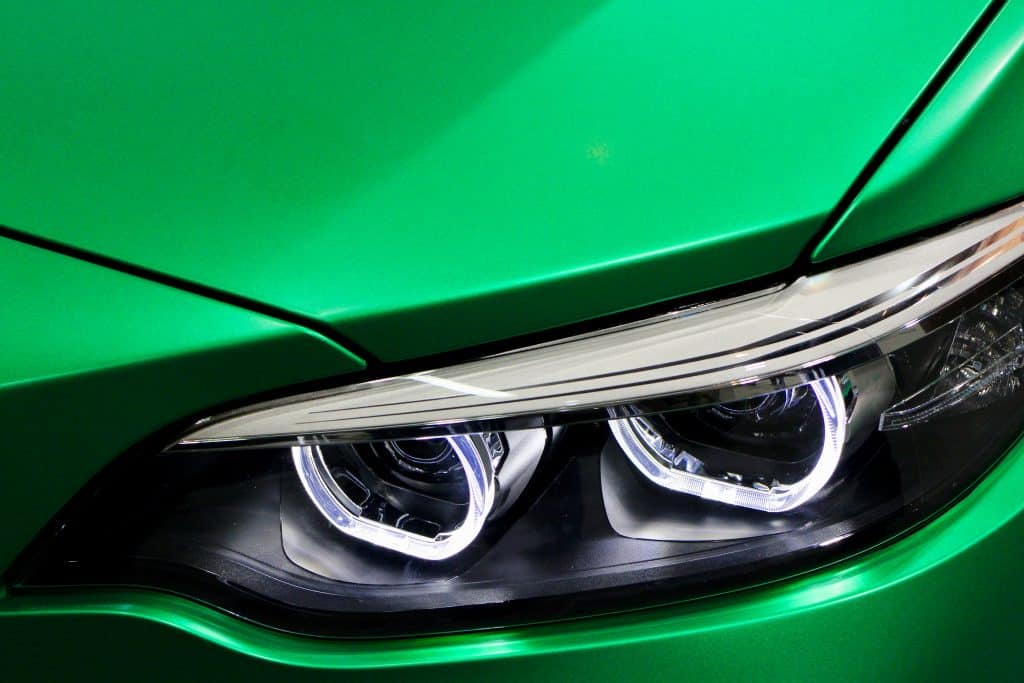Customization Trends: Matte vs. Glossy Solid Car Paint Finishes
The automotive industry has always been at the forefront of design and innovation. Car enthusiasts and manufacturers alike constantly seek ways to set their vehicles apart, and one of the most effective ways to do so is through custom paint finishes. In recent years, two distinct trends have emerged in the world of automotive customization: matte and glossy solid car paint finishes. These finishes have gained popularity for their unique aesthetics and the opportunities they offer for personalization. In this article, we will explore these trends, examining the differences between matte and glossy solid car paint finishes, their advantages and disadvantages, and the factors to consider when choosing between them.

Matte Finishes:
A Unique and Subtle Elegance
Matte finishes are characterized by their lack of gloss or shine. They offer a velvety, non-reflective surface that contrasts sharply with the traditional glossy finishes seen on most vehicles. These finishes have become increasingly popular for several reasons:
Unique Aesthetic:
Matte finishes stand out because they are far less common than their glossy counterparts. Their unique and subdued look provides a distinctive aesthetic that appeals to many car owners looking for something different.
Hides Imperfections:
Matte finishes are excellent at concealing minor imperfections on the car’s surface. Scratches and swirl marks are less noticeable on matte paint, making it a practical choice for those who prioritize a low-maintenance finish.
Attention-Grabbing:
Despite their lack of shine, matte finishes have a way of attracting attention. The juxtaposition of a matte car amidst a sea of shiny ones often makes it the center of attraction.
Modern and High-End:
Matte finishes often give vehicles a modern and high-end look. Luxury car manufacturers like Lamborghini and BMW have embraced matte finishes, associating them with prestige and sophistication.
However, matte finishes also come with some drawbacks:
Harder to Clean: Matte finishes can be challenging to clean, and they require specific care products. Using the wrong cleaners or techniques can result in permanent damage or a loss of the matte effect.
Prone to Stains:
Matte finishes are more susceptible to staining from bird droppings, water spots, and other contaminants. These stains can be difficult to remove.
Expensive Repairs:
Repairing damage to a matte finish can be costly and often requires professional expertise. A simple touch-up may not blend well with the rest of the paint.
Glossy Solid Finishes:
Classic Shine and Versatility
Glossy solid car paint finishes are the traditional choice for most vehicles. These finishes have a smooth, reflective surface that imparts a timeless and classic appearance to a car. They remain highly popular for several reasons:
Read more: The Impact Of Solid Paint On Car’s Resale Value
Classic Elegance:
Glossy finishes offer a classic and elegant look that is universally appealing. They give vehicles a sophisticated, mirror-like shine.
Wide Range of Colors:
Glossy finishes come in a vast array of colors, allowing car owners to choose from a spectrum of options, from metallics to pearls, to match their preferences and personalities.
Easy to Clean:
Glossy finishes are easier to clean and maintain compared to matte finishes. Standard car washing and detailing products work well, and imperfections are less noticeable.
Repairability:
If your glossy finish gets scratched or damaged, repairs are often more straightforward and affordable than matte finishes. Common touch-up paints and DIY kits are readily available.
However, glossy solid finishes have their own set of drawbacks:
Scratches and Swirls:
Glossy finishes can easily show scratches, swirl marks, and other minor imperfections. Frequent waxing and polishing are often required to maintain their appearance.
Commonality:
Glossy finishes are the norm, which means it can be challenging to make your vehicle stand out in a crowd of similarly finished cars.
Maintenance:
Regular maintenance is needed to keep the glossy finish looking its best. Neglecting it can result in a dulled appearance over time.
Read more: Preserving Classic Beauty: The Role Of Immobilizers In Protecting Classic Cars
Choosing the Right Finish: Factors to Consider
When choosing between matte and glossy solid car paint finishes, there are several factors to consider:
Personal Style:
Your personal style and preferences play a significant role. Matte finishes tend to appeal to those looking for a unique and non-traditional look, while glossy finishes offer classic elegance.
Maintenance:
Consider your willingness and ability to maintain your car’s finish. Glossy finishes are generally easier to care for, while matte finishes require more specialized care.
Budget:
The initial cost of customization and the long-term maintenance expenses should be factored into your decision. Matte finishes often require more investment.
Vehicle Type:
The type of vehicle you own can also influence your choice. Luxury and sports cars often look stunning in matte finishes, while family or everyday vehicles might suit glossy finishes better.
Climate:
Consider your local climate. In areas with harsh weather, matte finishes can be more challenging to maintain.
Conclusion
In conclusion, the choice between matte and glossy solid car paint finishes ultimately comes down to personal taste, practicality, and budget. Both options offer unique benefits and drawbacks, and the decision should align with your individual preferences and needs. Whether you prefer the understated elegance of matte or the timeless shine of glossy, the customization trend in automotive paint finishes allows you to make a statement on the road that is uniquely your own.

